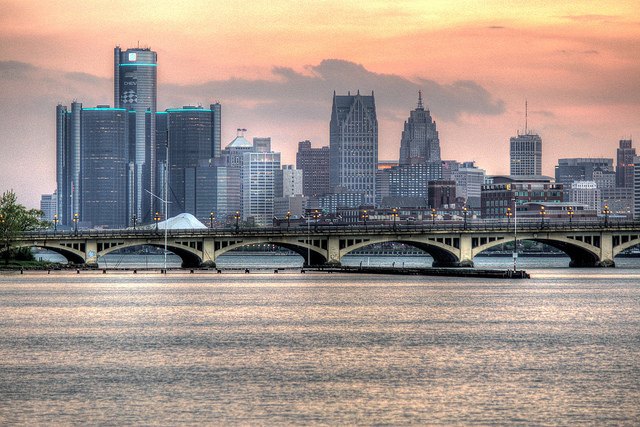#IHSMarkit
Early 2022 Auto Sales Forecasts Are Disheartening
After a tough couple of years, consumers went into 2022 hopeful that unhinged automotive pricing and lean dealer lots would be a thing of the past. However, analysts and industry groups have gone from being cautiously optimistic just a few weeks ago to fairly sullen about the prospects of North American shoppers locating anything that could be considered a square deal.
Goldman Sachs recently issued a report that attempted to encapsulate the whole picture, citing sustained congestion at the ports, pandemic-related factory closures, market inflation, millions of people just dropping out of the workforce, and continued complications stemming from the semiconductor shortage. It estimated that vehicle pricing would fail to go down — and may even pitch up in the first half of 2022 — until all of the above issues have been addressed. But it was hardly the only group chiming in or suggesting that the hard times could last through 2023, as the goalpost for what should be deemed acceptable is moved yet again.
Who's Buying What? Certain Automakers Making Inroads in Minority Communities
Regardless of what your college instructors claim, individuality remains a virtue. And, while (legally and harmlessly) going your own way is still a good thing, great masses of individuals often gravitate towards the same thing. It’s an age-old phenomenon, one easily seen in the buying preferences of minority communities.
If you’re someone who values the time-honored affordability and usability of the common sedan, thank the African-American community. They’re still buying tons of them. If you value innovation and industry disruption, tip your hat at the Asian community. They show an increased affinity for trying new things.
While registration data shows America’s visible minorities haven’t diverged too far from last year’s buying preferences, a few surprises can be found in data drawn from the first half of the year.
Non-Detroit Three Automakers Already Sell More Cars in North America, and Soon They'll Make More
Detroit’s dominance in the domestic automotive sphere continues to erode. Whereas the manufacturing hub, home to Ford, General Motors, and Fiat Chrysler Automobiles, once churned out the bulk of vehicles built — and sold — in the United States, times have changed.
The former Big Three automakers no longer hold the majority market share in the U.S. (in 2016 it was 44.9 percent), necessitating a name demotion to “Detroit Three.” From Silicon Valley to the Midwest and South, a diverse group of automakers is busily assembling cars and SUVs for a population with very wide-ranging tastes. We’ve long since become used to the idea that many Hyundais now hail from Alabama, several Subarus come from Indiana, Honda models grow in Ohio, and BMWs arrive from South Carolina with a Southern drawl.
Now, one industry watcher claims the Detroit Three won’t even finish the year as the majority builder of North American-made vehicles.
Record High Automotive Incentives Could Harm Sustained Profitability
Every industry analyst is beginning to sing the same tune. Despite things looking good now, the worm is about to turn. Global sales look poised to remain strong this year but the market has peaked and sales should persist on a graph as a flat line. Next year could be a different story, however, and there’s much apprehension surrounding lengthening loan terms and the upsurge of subprime lessees.
Rising incentives are also causing alarm; J.D. Power and Associates expects the average incentive per new unit to top $4,000 in 2017. While that tactic may get people into dealerships now, it might also harm long-term profitability as the automotive industry swings toward leaner times.
Stand By Your Man(ufacturer): Here Are the Makes and Models Owners Can't Stay Away From
Brand loyalty is a central element in the consumer culture that we’re all slaves to. There is a specific Korean company that makes most of the electronics I own, an American distiller that I trust with my alcohol, and I have never purchased any toilet paper other than the one that has the dog for a mascot. When I buy another motorcycle, I already know what it’s going to be — and I can say the same thing about jeans, waffles, or boots.
As automotive enthusiasts, most of us are informed enough to have our preferences without succumbing to a blind faith in any singular model or brand. That said, the rest of the population isn’t made up of car devotees. Some people will happily return to a familiar dealership, buy a familiar truck, drive their new purchase home, and immediately apply a decal of Calvin urinating on the emblem of a rival brand.
Fortunately, it’s not always about automotive zealotry. Often, people return to a particular model or manufacturer because it treated them right. As it turns out, they’ve been awarding trophies based on this phenomenon for two decades. Last night, business and marketing research provider IHS Markit presented the 21st annual Automotive Loyalty Awards in Detroit.
So, where do the strongest automotive loyalties lie?
The Average Road-going Vehicle is Now Older Than Ever
The life expectancy of the average automobile was only 6.75 years in 1930. It is almost double that now and shows no signs of stopping.
As cars and trucks have continued to become longer lived, the number of operational vehicles in the United States hit a record high this year. Despite the automotive genocide that was Cash for Clunkers, the average vehicle on U.S. roads has grown in age since the financial crisis. Either through necessity or personal preference, Americans are currently holding onto their cars longer than ever before.





















Recent Comments